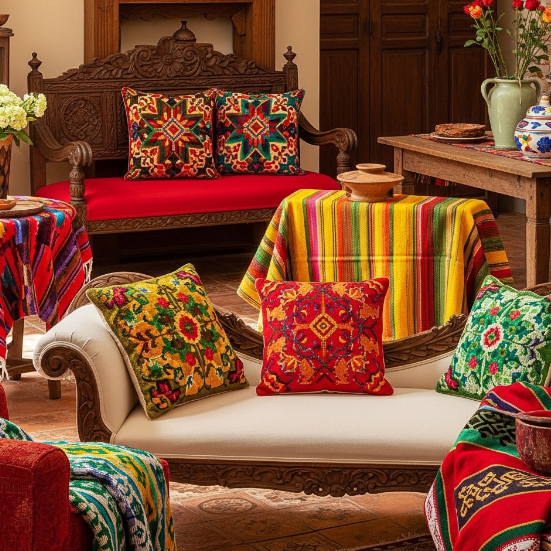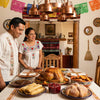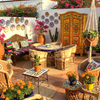Exploring Mexican Textile Arts

Threads of Tradition: Exploring Mexico's Rich Textile Heritage
Mexico's vibrant culture is perhaps nowhere more beautifully expressed than in its textiles. More than just fabric, these woven and embroidered pieces are living narratives, telling stories of ancient traditions, diverse communities, and the incredible artistry passed down through generations. This is why one of my favorite ways of accessorizing a Mexican living room or bedroom is adding vibrant, interesting artisanal throw pillows or blankets.
A Tapestry of Time: Origins and Evolution
The history of Mexican textiles stretches back thousands of years, long before the arrival of the Spanish. Indigenous civilizations like the Aztecs and Mayans were master weavers, using natural fibers such as cotton, agave, and ixtle to create intricate garments, ceremonial cloths, and everyday necessities. These early textiles were deeply symbolic, often reflecting social status, spiritual beliefs, community identity and relationship to the land.
Regions of Riches: Where Mexican Textile Traditions Flourish
It makes perfect sense that Mexico’s textile traditions are as varied as its landscapes. Each region offers unique styles, influenced by local materials, climate, and cultural heritage. Here are a few notable areas:
- Oaxaca: This southern state is a renowned hub for textile arts, particularly known for its vibrant weaving and embroidery. Zapotec weavers in villages like Teotitlán are famous for their wool rugs and tapestries, often made with natural dyes from plants and the cochineal insect, producing brilliant reds. Huipiles (traditional women's tunics) from Oaxaca are also highly prized for their intricate designs and rich symbolism. In recent years I was delighted to see these designs as the inspiration for one of the most beautiful fashion shows I have ever seen!
- Chiapas: In the highlands of Chiapas, indigenous communities like the Tzotzil and Tzeltal are celebrated for their distinctive hand-embroidered and woven textiles. Their garments often feature geometric patterns, animal motifs, and rich colors, reflecting their unique cosmology and daily life. San Cristóbal de las Casas is a great starting point for exploring these traditions.
- Puebla: The state of Puebla is home to a variety of textile traditions, including the distinctive "Tenango" embroidery, also known as Otomí. These pieces are characterized by whimsical and colorful depictions of animals, plants, and scenes of daily life on a neutral background.
- State of Mexico: Tenancingo, in the State of Mexico, has a long-standing tradition of weaving rebozos, the iconic Mexican shawl, known for their intricate designs and fine craftsmanship.
- Michoacán: The Purepecha people of Michoacán produce beautiful textiles, often featuring detailed embroidery and unique weaving patterns.
The Present State: A Living Art Form
Today, Mexican textiles are a powerful symbol of cultural identity and an important economic force for thousands of families, especially in rural indigenous communities. There's a strong movement to preserve these ancestral techniques and ensure fair trade for artisans. As you know, we at Gringo Furniture are firm believers in and supporters of Mexican artisans. Today, organizations like UNESCO are working to empower women artisans and promote the value of their handmade creations.
Where to Find These Mexican Treasures
When searching for authentic Mexican textile pieces, look for direct-from-artisan sources or fair trade organizations that ensure ethical practices and support the communities behind the craft. You can often find exquisite pieces in:
- Local Markets: Immerse yourself in the vibrant local markets of Mexico, especially in states like Oaxaca and Chiapas, where you can often meet the artisans themselves.
- Specialized Boutiques: Many boutiques, both within Mexico and internationally, curate collections of high-quality, handmade Mexican textiles.
- Online Platforms: A growing number of online stores and direct-to-artisan websites are making it easier to discover and purchase authentic Mexican textiles from around the world. Look for those that emphasize fair trade and cultural preservation.
By choosing authentic Mexican textiles for your home, you're not just acquiring a beautiful piece; you're investing in a rich cultural legacy and supporting the talented artisans who keep these vital traditions alive.
-
Posted in
All





